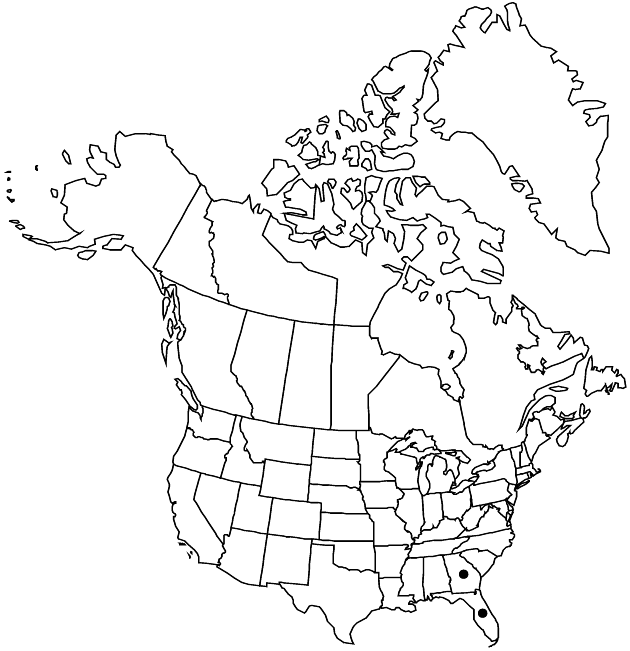Lygodesmia aphylla
in A. P. de Candolle and A. L. P. P. de Candolle, Prodr. 7: 198. 1838.
Perennials, 30–80 cm solitary; roots or rhizomes fleshy; caudices woody, branched. Stems 1, erect, green, simple or sparsely branched distally, strongly striate. Leaves (basal in rosettes, sometimes withered at flowering); proximal blades linear, 100–350 × 2–3 mm, margins entire; cauline similar or reduced to scales. Heads (1–5) borne singly or in corymbiform arrays. Involucres cylindric, 14–22 × 5–6 mm, apices narrow. Calyculi of 8–14, deltate bractlets 1–5 mm, margins scarious, erose-ciliate (faces tomentulose). Phyllaries 8, linear, 14–22 mm, margins scarious, apices often purplish, acute, appendaged. Florets 8–10; corollas pink to lavender or blue, 30–40 mm, ligules 4–6 mm wide. Cypselae (subcylindric) 11–14 mm (faces smooth, abaxial weakly striate, glabrous, adaxial sulcate); pappi 12–18 mm. 2n = 18.
Phenology: Flowering Feb–Nov.
Habitat: Dry sandy soils, flatwoods, pine barrens, disturbed areas, roadsides
Elevation: 0–200 m
Discussion
Lygodesmia aphylla is recognized by its erect, sparingly branched habit, leafless stems, relatively large involucres and florets, apical appendages on phyllaries, and grooved cypselae. The habit is similar to that of L. texana. The basal leaves are frequently absent at flowering and are entire, not pinnately lobed as in L. texana.
Selected References
None.
Lower Taxa
"fine" is not a number.
